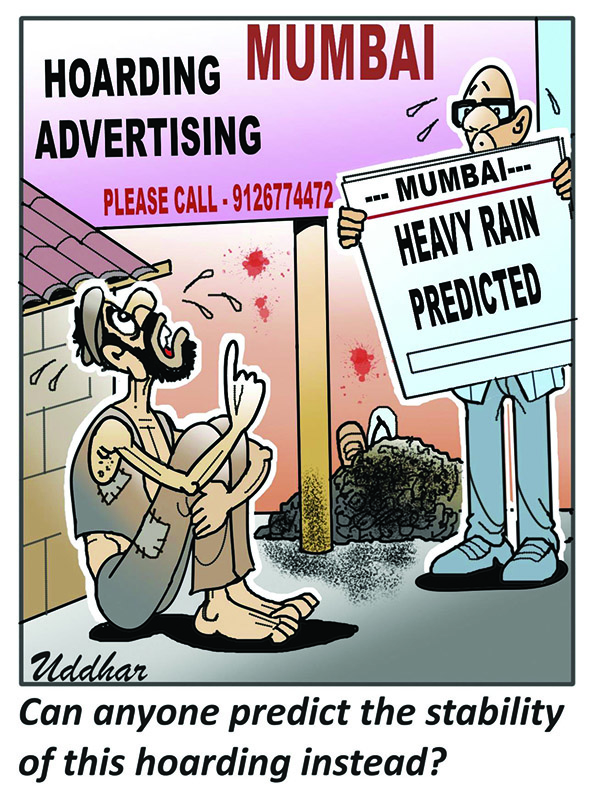These hoardings and billboards very often are located at such dangerous spots, that they distract the drivers and cause accidents.
In December last year, the State government had constituted a 15-member committee under the chairmanship of the Secretary (Revenue) to regulate and determine the issuance of permission and monitoring of hoardings as per the directives of the High Court of Bombay at Goa. In February this year, the High Court asked the committee to formulate guidelines to grant permission for the erection of hoardings and signages across the State as early as possible and submit a report within the next three months.
In the latest, the High Court on Friday, May 3, 2024, directed the Police Department and the Department of Transport to immediately remove vehicles with billboards parked by the roadside or in the parking places at junctions or at the intersection of the roads or footpaths. The Court further directed the Police Department and the Department of Transport to file a compliance report on May 10, regarding the removal of such vehicles.
If one observes, the government is one of the biggest lawbreakers when it comes to advertising through hoardings by the roadside along the national highways the state highways and the major district roads. A glance through the various activities advertised and promoted by the State government over the years will show that a majority of the most important locations of such hoardings are occupied by government advertisements.
Whether it was the G20 summit, the International Film Festival, other State-sponsored programmes, or in the run-up to the Lok Sabha elections to promote government schemes.
A look at the recent judicial directives in administrative and executive affairs of the State to provide justice and streamline the governance, are an indication that illegalities are becoming a norm and working within the framework of law is becoming an exception. From illegal constructions in No Development Zones to unauthorised structures along the coastal belt, environmental destruction and daily executive processes such as garbage disposal and municipal market management, the courts had to intervene and provide solace to the citizens. The latest observations of the High Court in the case pertaining to the Outline Development Plans (ODPs) along the coastal belt of North Goa that prima facie a heavy-weight politician is the biggest beneficiary, points at the involvement of the political class at various levels - from the local self-governing bodies to the State government - in caring out illegalities.
The principal seat of the Bombay High Court in February this year had said that “no individual or a group, be it a political party, commercial organisation, or religious denomination, can be legally permitted to utilise public spaces, such as footpath, street lights and roads, for personal gains and advertisement”. Stating that such illegal hoardings and banners cause hazards to pedestrians and other users of roads, the Court had appealed to the public to wake up to the situation and not to indulge in any such activities that encourages illegalities.
And therefore the question arises whether the lawmakers are indeed the lawbreakers in the first place. Along with those carrying out the business of hoardings and billboards on vehicles, shouldn’t government agencies and departments, and furthermore, the local self-governing bodies and the municipalities be penalised for not just turning a blind eye to the illegalities but also being participants in the illegal activities?
